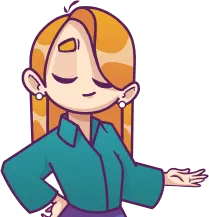
Dynamic Programming DAA
Assessment
•
RAHUL SONAWANE
•
Computers
•
University
•
66 plays
•
Hard
Improve your activity
Higher order questions
Match
•
Reorder
•
Categorization
.svg)
actions
Add similar questions
Add answer explanations
Translate quiz
Tag questions with standards
More options
20 questions
Show answers
1.
Multiple Choice
In dynamic programming, the technique of storing the previously calculated values is called ___________
Saving value property
Storing value property
Memorization
Mapping
2.
Multiple Choice
Consider the two strings “”(empty string) and “abcd”. What is the edit distance between the two strings?
0
3
4
None of the above
3.
Multiple Choice
What are 2 things required in order to successfully use the dynamic programming technique?
Optimal sub structure and overlapping sub problems
A problem that can’t be sub divided and is complex
Non overlapping sub problems and intervals
Recursion and a problem that is complex
4.
Multiple Select
Dynamic Programming is often used for (choose all that apply):
Optimization problems that involve making a choice that leave one or more subproblems to be solved.
Problems previously solved using divide and conquer that have over lapping subproblems
Non polynomial solution problems
Subproblems where resources are shared
5.
Multiple Choice
The difference between Divide and Conquer and Dynamic Programming is:
The division of problems and combination of subproblems
Whether the sub problems overlap or not
The way we solve the base case
The depth of recurrence
6.
Multiple Choice
If a problem can be broken into subproblems which are reused several times, the problem possesses ____________ property.
Overlapping subproblems
Optimal substructure
Memorization
Greedy

Explore this activity with a free account
Find a similar activity
Create activity tailored to your needs using
.svg)

Input Output and Storage Devices
•
1st - 4th Grade

Principles of Programming Languages
•
University

Java Programming
•
2nd Grade

Revision Test
•
4th - 5th Grade

Android
•
2nd - 5th Grade

Input and Output Device
•
1st - 2nd Grade

Algorithms and Flowcharts
•
3rd - 5th Grade

Windows Basics
•
5th Grade